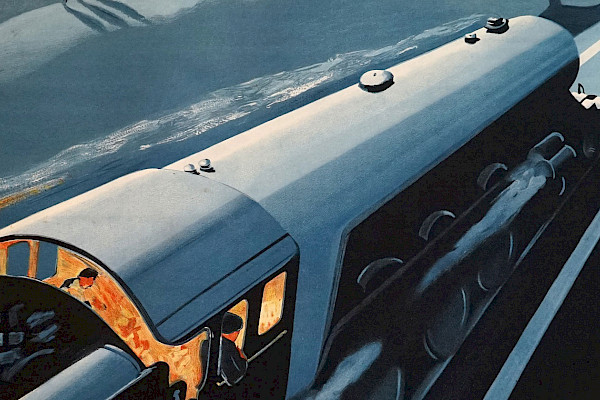The Great Western Railway in 1902
GWR locomotive 3041 gave sterling service on routes out of Paddington from 1894 until 1912. The engine was originally named Emlyn, but then renamed The Queen in 1897. A replica of the locomotive now stands at Windsor & Eton station (photo © Khellon / dreamstime.com).
We are staying close to home these days. But it is a chance to explore some of the curiosities on our bookshelves, which include many old railway timetables.
Our copy of the Great Western Railway (GWR) timetable for the early months of 1902 is splendid reading for these virus times. It reminds us that the 11.03 from London’s Paddington station to Swindon was not available to regular passengers; this service was limited to gentlemen and their families wishing to have their horses and carriages conveyed to Wiltshire. The GWR had many such trains, but they quickly slipped from the timetables as the horse-drawn carriage was replaced by the motor car.
A note elsewhere in the timetable advises passengers that “in order to conduce to safety in working,” trains times may vary in foggy weather – and, indeed, trains may not run at all.
Combing the pages of the timetable, it is easy to be overwhelmed by the detail. The midday train from Paddington to Newbury will, upon special request to the guard, make an extra stop at Midgham in the Kennet Valley, but only on Wednesdays – and presumably not if dense fog hangs over the valley.
Passengers travelling on the overnight boat from Cork to Milford Haven are reassured that they will not go hungry: “Dinner is served on board the steamer at 7.15pm after leaving Cork.” The ten-hour crossing has passengers disembarking in Wales in time to catch an early train to London, reaching Paddington at lunchtime. Actually that rail-sea journey from Cork to London sounds a good deal more civilised that anything in the modern timetables. A little note in small print reminds passengers that Irish time is 25 minutes slow of Greenwich Time. Travellers must thus advance their watches upon disembarking at Milford Haven.
Back in 1902, there were through trains from suburban stations on the Great Western Railway to what we now know as London’s Circle Line, so affording direct connectivity between Slough and the City of London, which not long hence will be restored by the opening of the Elizabeth Line. Many of the 1902 trains had special fares which, the timetable notes, “are only available to bone fide workmen and working women.”
There are hints, though, of difficulties. Of the Mawddwy Railway, a branch line in mid-Wales, the timetable notes that “this railway has been temporarily closed to passenger traffic.” The line had in fact closed in 1900 pending repairs. It eventually reopened in 1911, but it was to be a short-lived revival. The last passenger train on the Mawddwy line ran in 1931.
Although the focus of the GWR timetable is quite properly on the territory served by the trains of the Great Western, there are helpful supplementary pages for those tempted to venture further afield. Those heading north to Scotland are reminded that they may care to break their journey at Gloucester. Those returning from the continent are advised that the GWR has special arrangements for the conveyance back to Britain of champagne, claret and brandy.





About The Authors
Nicky Gardner and Susanne Kries
Nicky and Susanne manage hidden europe, a Berlin-based editorial bureau that supplies text and images to media across Europe. Together they edit hidden europe magazine. Nicky and Susanne are dedicated slow travellers and the authors of the book Europe by Rail: The Definitive Guide. The 17th edition of that book was published in 2022 and reprinted in July 2023. You'll find a list of outlets that sell the book on this website.